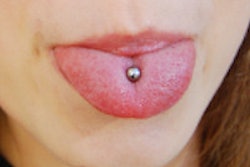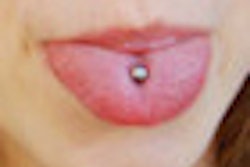The California Dental Association (CDA) has issued a warning about the significant risks associated with oral piercings, including the possibility of cracked, broken, scratched, or sensitive teeth and damaged fillings.
The CDA said that it recognizes that in today's society many people use body piercing as a type of self-expression. However, people should be aware of the potential drawbacks, according to CDA President Lindsey Robinson, DDS. Oral piercings can interfere with speech, chewing, or swallowing and injure periodontal tissue. In addition, because the mouth is full of bacteria, a pierced area is difficult to keep clean, and infections occur more readily after an oral piercing, Dr. Robinson added.
Although not common, serious infections can occur, such as hepatitis or endocarditis (inflammation of the tissue surrounding the heart). Common symptoms after oral piercing include pain, swelling, and an increased flow of saliva. For some, blood poisoning, metal allergies, or blood clots can occur. Additionally, piercers have no standardized training and may have limited knowledge of anatomy and physiology.
If there's a blood vessel or nerve in the path of a piercing, severe and difficult-to-control bleeding or nerve damage can result, Dr. Robinson warned.
Metal jewelry is often the culprit in cracked or broken teeth, and although plastic jewelry reduces this risk, it cannot eliminate it entirely. For lip piercings, the back side of the jewelry attaches inside the mouth and can be a source of irritation to the opposing tissue. As the metal or plastic rests on the gum tissue, it can wear away the tissue as it moves back and forth -- a result that requires reconstructive surgery to repair and, in some instances, results in lost teeth.
It happens more commonly than people realize, Dr. Robinson said. Checking the tissues in contact with metal or plastic to ensure the jewelry isn't causing damage or infection is important.
The CDA recommended consulting a dentist before making the decision to pierce.



















